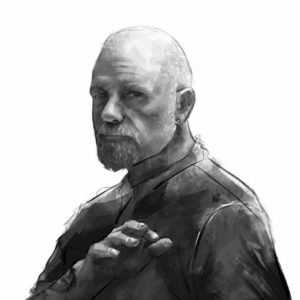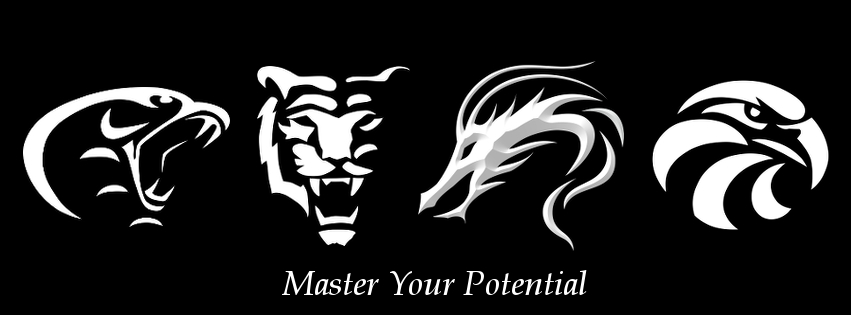Strength does not come from physical capacity. It comes from an indomitable will. Ghandi
Over the years, the martial arts have developed traditions of their own as well as picking up those of the cultures they developed in. There are many martial arts from several countries and each art has many styles.
BOWING
People outside of the martial arts often misunderstand bowing. In the Orient, bowing is a sign of respectful greeting; not a sign of submission or worship. To bow to another person is to indicate that you trust them enough to willingly take your eyes off of them. In the West, we shake hands. This grew out of the battlefield practice of clasping the enemy‟s sword-drawing hand during negotiations to insure that he could not draw his sword. Today it is used as a greeting.
Bowing to instructors and fellow students at the beginning of practice is a sign of trust and respectful greeting. When finished, it is a sign of thanks and that there are no winners or losers.
Bowing when entering the studio is a good reminder that the ego is left outside and the student is not merely entering a room but entering an alternative mindscape.
Bowing before and after any paired practice shows that your intentions are mutual training and support; you are friends working together.
UNIFORMS
The first martial arts uniforms were nothing more than the common street clothes of the people of China, Korea, Okinawa and Japan. At the Norwich Kung Fu Academy we asked ourselves what is the most practical clothing for our purposes and so we train in simple loose trousers and T shirts. It is this approach that embodies the essence of Tao Te Kung Fu.
BELTS, RANKS and PROMOTION
Many people, including martial artists, are confused about belts and their colours. For many centuries, the belt did not signify rank. It was Dr. Kano, the founder of Judo, who introduced the use of different belt colours to denote ranks. He did this to make it easy to identify different ranks for competition. Different systems use different colours. Most Chinese martial arts don‟t use belts but use sashes instead. In Japanese martial arts, the belt was used to keep the jacket closed and was white. With years of practice, the belt would become soiled and stained and would eventually turn black. The colours used in the Korean martial arts are based on the coloured robes worn by the different classes of royalty in the ancient Kingdom of Silla. At the Norwich Kung Fu Academy we use a system of coloured belts to signify rank within the art to enable students to have an understanding of their own progression through the syllabus. At a grading session a student is formally assessed to review and clarify what has been learned and encourages the student with confirmation of their skills and is an opportunity to inform the student of how they can move forward and improve further. Each belt is also a landmark; a milestone on their personal journey. After two to three months, a student should be ready for their first rank promotion. Rank promotion means that you have an adequate grasp of certain knowledge and skills needed to begin learning the next level. It is not to see if you have perfected your previous knowledge. Historically the Chinese military used animals to signify rank and this practice is reflected in the ranking system beyond Black Belt. After three years of continuous study, the average student will normally earn their Black Belt. After another year of training in the Masters Course a student will achieve Cobra Rank. Two more years will take them to Eagle Rank. Another three years of training will take them to Tiger Rank and after a further four years, or ten years from achieving Black Belt, students can reach Dragon Rank and can honestly describe themselves as a Kung Fu Master.
FORMS, PATTERNS or KATA
These are a prearranged series of movements designed to help students practice their techniques alone and to help standardise techniques among schools. Practicing forms helps teach the student to focus their attention and to perfect their movements. In Tao Te Kung Fu forms are practiced unarmed or with weapons.
SPARRING
There are many types of sparring ranging from pre-arranged “one-steps” to full-contact competitive fighting. In all cases the opponent is the same; your own lack of knowledge and skill. In Tao Te Kung Fu, we do not spar with the intention of trying to win, or “beat” our opponent, we spar to improve our own techniques and to learn of and exceed our own limitations. Junior students do not spar with each other, but instructors simulate attacks using focus pads of various sorts to enable students to practice their techniques against solid objects.
VIOLENCE
The martial arts techniques we teach can cause horrific damage when misused. For this reason, as instructors we are selective about who we accept as students and some techniques will only be taught to more advanced students who have demonstrated over time their self-discipline and character.
The martial arts are intended to teach self-defence, self-control and self-confidence. It is hoped that as a student learns of their potential for destruction, they will also learn of their need for control and discipline.
REMEMBER: THERE IS NO HONOR IN DEFEATING A MUCH-WEAKER OPPONENT; YOUR REAL OPPONENT IS YOUR OWN LACK OF SELF-CONTROL.









